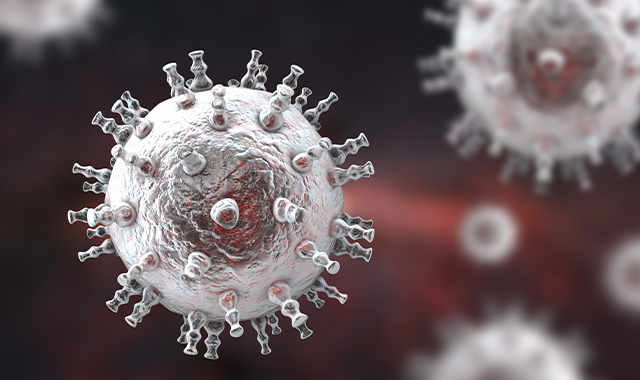Shingles in Children
HZ in children is uncommon and is 10 times less common in kids who’ve been vaccinated against chickenpox.

Shingles is an illness that’s traditionally and primarily associated with people over the age of 50. But outbreaks in children, while rare, are not unheard of. A recent study and a case report looked at the incidence in children who have been vaccinated against chicken pox.
The study reports that the rate of herpes zoster (HZ) in healthy children who have received the varicella vaccine is as much as 10 times lower than would be expected after a natural case of varicella. However, children vaccinated after age 5 had a higher, but not statistically significantly different, rate than those vaccinated between 12 and 18 months. Among children vaccinated between 12 and 18 months, incidence rates gradually increased each year in the first 4 years after vaccination. The study looked at records for 172,163 children who had been vaccinated in the United States, with an overall follow-up of 446,027 person-years.
Among the children who developed HZ, there were 1 (0.7%) case of lymphoid leukemia, 16 (11.1%) cases of asthma with three or more acute exacerbations, and 12 (8.3%) cases of developmental disorders. “Despite the small numbers, the roles of delayed vaccination, severe asthma, and development disorders warrant further investigation,” the study’s authors conclude. “In the future, analyses of HZ isolates will be needed to identify the virus strains causing reactivation.”
Related: Understanding and Treating Postherpetic Itch
Other research from the Department of Dermatology at Wake Forest University School of Medicine reports on a case of shingles involving an otherwise healthy 19-month-old boy. His mother brought him to the dermatology clinic with a rash on his right groin and leg that did not cross the midline. He did not have a fever and the rash did not appear to bother him.
The boy had no history of chickenpox or exposure to the varicella virus, and had received the varicella-zoster virus (VZV) vaccine six months earlier. Laboratory testing revealed a positive result for VZV. The boy underwent a five-day course of acyclovir. The majority of his lesions crusted over within two days, and the rash was nearly resolved a week later.
The authors conducted an online PubMed search and identified 22 other cases of shingles in healthy children who had received the VZV vaccine. The parameters of the search were limited to immunocompetent children and adolescents age 18 years or younger with no history of varicella or exposure to varicella during gestation.
A review of the cases of the 16 patients who underwent genotype testing to determine the source of their infection revealed that they were evenly split between the Oka vaccine strain virus and the wild-type virus.
The researchers conclude that HZ in children is an uncommon clinical entity. “Most children with HZ are immunocompromised, have a history of varicella, or were exposed to varicella during gestation,” they write.
Trending: New Research Aims to Combat Flu Pandemics
The study also concludes that a subclinical varicella infection is not the only explanation for HZ in a healthy vaccinated child. It states that HZ in immunocompetent children is due to either a reactivation of wild-type or Oka vaccine-strain VZV, although it’s not known why this occurs. When HZ presents in a vaccinated immunocompetent child without a history of varicella infection or exposure, vaccine-strain-induced HZ should be considered, it notes.
In a related development, research published in the Journal of Child Neurology recommends observation of children who develop HZ after varicella vaccination due to the risk of developing meningoencephalitis.
Although the researchers analyzed just three case studies, they believe that the vaccine virus is the likely cause of HZ of the lumbar dermatomes.
“Herpes zoster induced by varicella vaccination usually occurs within months to a few years after the vaccination in immunocompetent children. Another neurologic complication of zoster, meningoencephalitis, occurs within one to two weeks of onset of herpes zoster,” write the study’s authors. They add that there are undoubtedly similar cases of HZ without rash following varicella vaccination that are leading to undiagnosed meningoencephalitis in children caused by the vaccine virus.